Today we would learn more about the redwoods.
We started the day driving through the small town of Scotia, California, which was a "company town" once owned by the Pacific Lumber Company (PALCO). The town was in limbo for many years after the company closed, but at the time of this update (2023) it seems to have gained some traction as an independent development.
I've tried my best to find an even-handed discussion of what happened here and the current state of affairs, but it is like trying to find an even-handed discussion of the Arab-Israeli conflict! Everything I've found has been polemical. The Wikipedia article linked to above is noted as having questionable neutrality and the "talk" page associated with it contains spirited discussion. This is typical of the rest of related stuff on the WWW.
The best I can do is to state that for many years the company was stable and sustainably operated. In 1986 it was the subject of a hostile takeover. The policies changed and eventually the company went bankrupt.
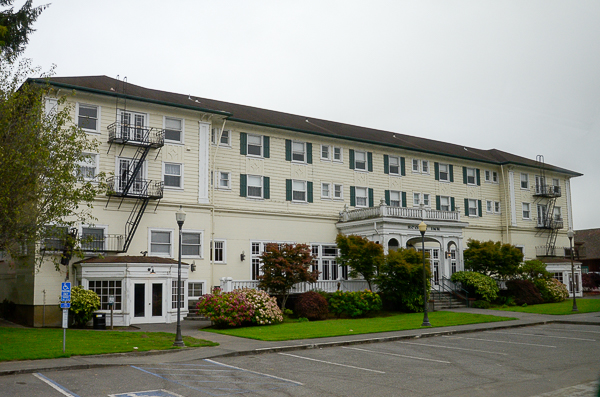
The historic Scotia Lodge, dating from the 1920s, was closed at the time of our visit. It is now open as a boutique hotel.
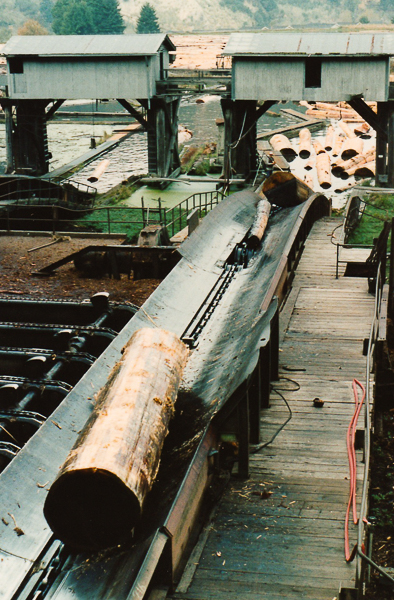
Jim and I toured the lumber mill and museum in 1991 when it was still processing old-growth trees. This picture is from that time.
The size of these logs is hard to judge from this picture because everything is large-scale. As I recall, however, they are huge. This would be after the takeover when many old-growth trees were being clear-cut and processed.
I haven't been able to find any decent pictures of the inside of the mill, but it was an impressive sight. Afterwards there was an informative museum and interpretive center left over from the earlier owners. There was also a demonstration grove down the road a bit that we visited. I haven't located any pictures from it yet.
The mill facility we toured has been demolished and its materials reclaimed. There is quite an industry built around wood recycled from demolition. Other similar web sites advertise PALCO wood.
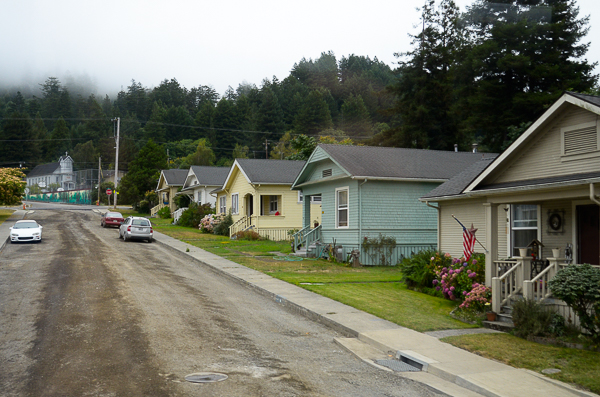
A Wikipedia article about Scotia pretty much lines up with what Lynn told us: properties once owned by the lumber company have been made available for private ownership. The most recent info that I can find implies that homes are now being sold and occupied. Most of the streets that we saw were being repaved, presumably as part of upgrading sewer and utilities as noted at the link.
I wish them well. Any way you look at it, it is a sad story.
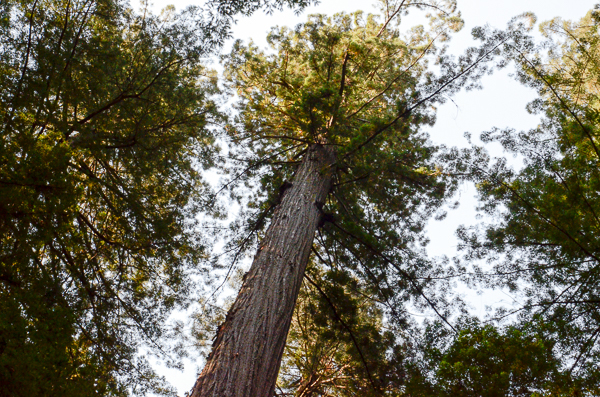
We next visited Humboldt Redwoods State Park. Our first stop was the Founders' Tree, dedicated to the men who founded the Save-The-Redwoods League, which is still focused on purchasing and preserving as much of the old-growth groves as tpossible.
One of the founders, John Merriam, in 1920 shortly after the League was established, submitted to the Sierra Club Bulletin a letter found in the writings of John Muir. He wrote passionately of the need to save the ancient redwood forests. Initial purchases of land for preservation occurred in 1921 and these lands became the foundation of the park.
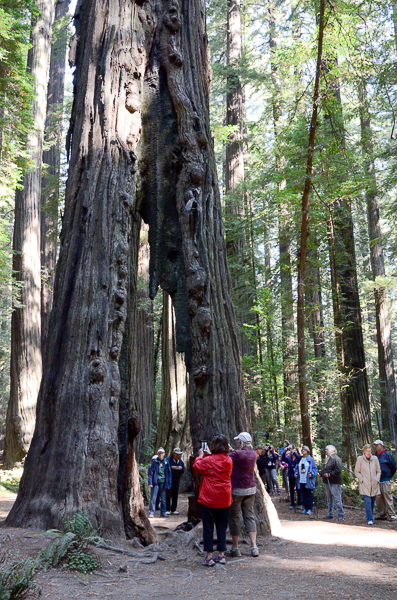
The scientific name of the coast redwood is Sequoia sempervirens, which I like to think means "eternal." The trees can survive devastating fire damage, as shown here. They can even survive logging, since multiple clones will grow up around a stump. They are resistant to insects and rot.
The only thing they cannot survive is the death of their roots and the major killer of their root systems is us.
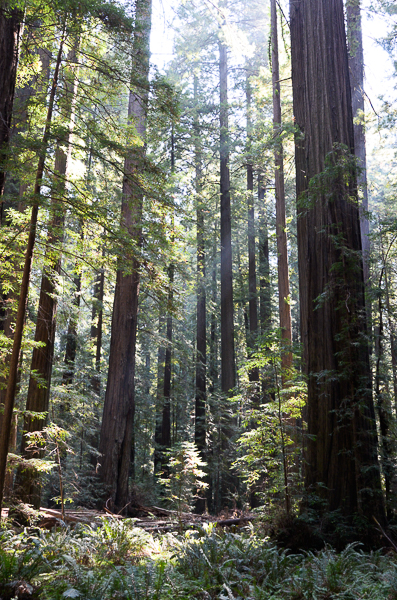
The serenity of a redwood grove.
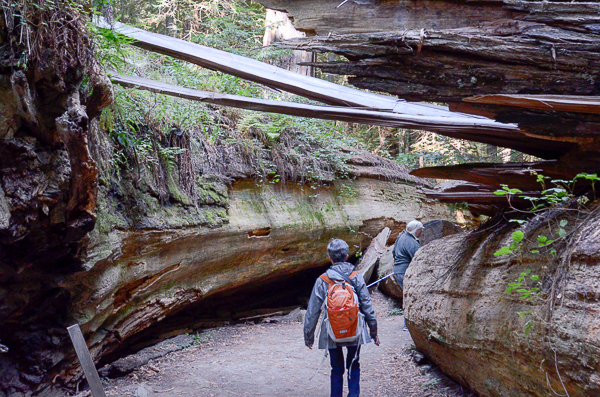
The massive trunk on the left is the remains of the Dyerville Giant, which may have been the world's tallest tree before it fell in 1991. The sound of its falling was likened to a freight train crash and the impact was measured on seismographs.
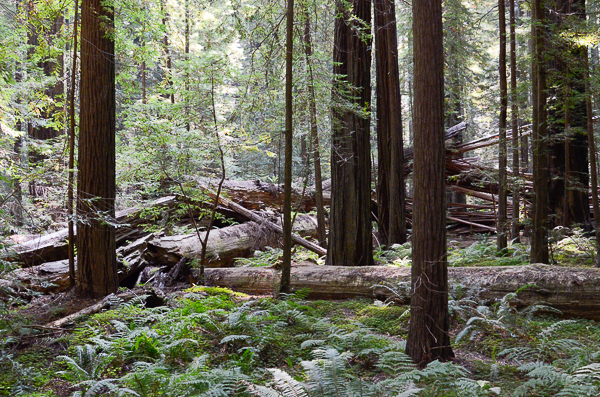
As noted earlier, redwoods have shallow root systems and can thrive and grow only in groves. When a single large tree, like the one above, falls, it destabilizes the area around it and other trees are likely to fall. The area around the Dyerville Giant was littered with trees that had fallen since. It looked like a gargantuan game of pick-up-sticks.
This clearing allows light to reach the forest floor so that younger trees and clones can grow to take the place of the fallen ones. Plus the downed trunks will become nurse logs.
It is comforting to think that such regrowth will resupply the forests that we humans have devastated. It can, but it will take 1000s of years! Will we let that happen? These trees and forests exist in a time frame that we cannot easily comprehend.
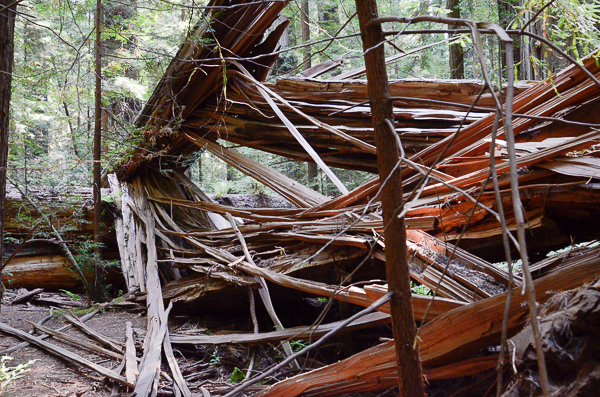
This tree had fallen across the remains of the Giant earlier in the summer. It is easy to see the straight grain of the wood that makes it so desirable. Carol said that at each visit this season the splinters had sagged a bit more.
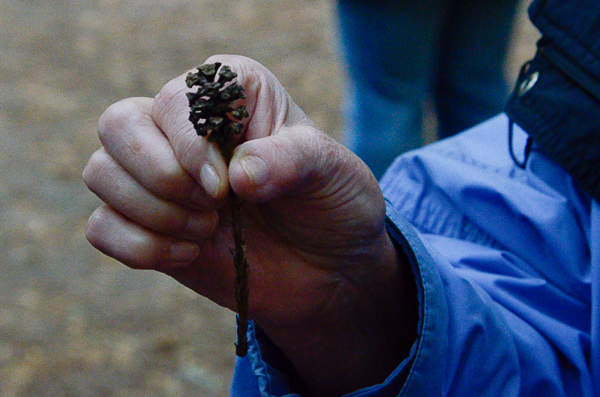
These huge trees come from tiny cones with even tinier seeds. One of our group found this female cone that had opened and discharged its (her?) seeds. There are also male cones that open in the spring to disperse pollen. I read somewhere that of the millions of seeds a redwood will produce in its lifetime, maybe one might become a mature tree.
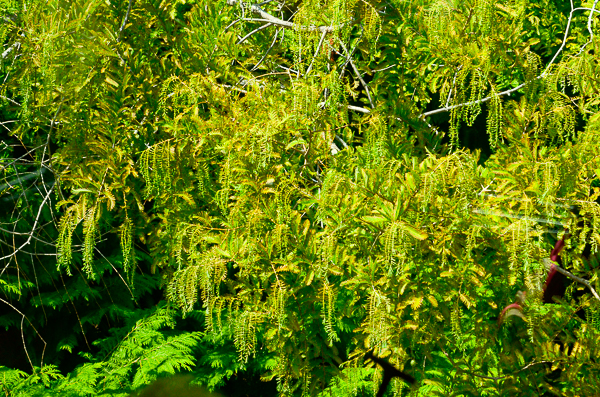
As we drove to the picnic ground for lunch, we stopped to visit a tree from the past.
There were once many species of redwoods, but until recent years only two were thought to remain: Sequoia sempervirens and Sequoiadendron giganteum, giant sequoia. The latter is found in a restricted range on the slopes of the Sierra Nevada near Yosemite.
in the 1940s, however, a remnant of the dawn redwood, Metasequoia glyptostroboides, was discovered in China. It has since become established in several places throughout its historic range. Unlike its cousins, this tree is deciduous.
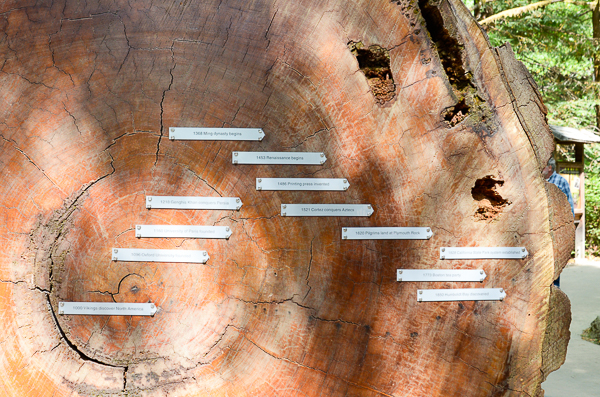
The park where we had lunch had a small interpretive center. This display caught my eye. The innermost label, which is pointing to a time when the tree was already well-grown, indicates 1000AD, the time when the Vikings discovered North America. The outer-most label points to 1928, the time the California State Park system was established. Other highlighted times include Genghis Khan's conquests, the development of the printing press, and the arrival of European conquistadors.
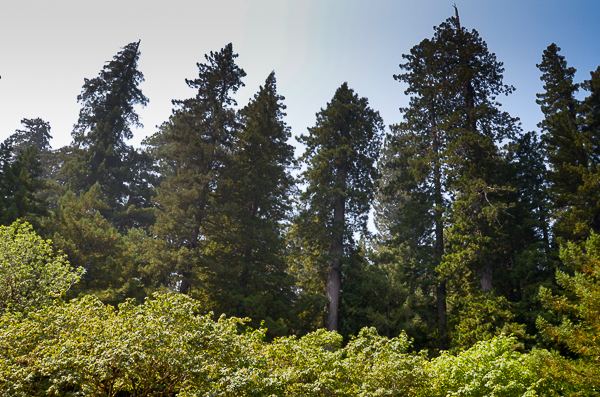
I finally got a picture of the redwoods from "outside." I still couldn't get an entire tree in the frame. The greenery in front of the redwoods is maple trees, not shrubs. They are 50-100 feet tall themselves, but are dwarfed by the giants.
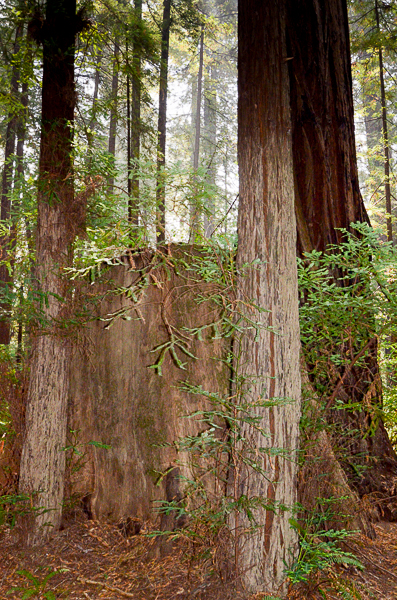
On our postprandial walk among the trees, we came upon this example of a logged tree that has sent up new trunks from the root system. Someone has fancifully called these "cathedral trees" because if you stand on the stump, you are surrounded by a mini-grove of trees.
Carol told us that DNA analysis has confirmed that such sprouts are indeed clones of the original tree and not simply new trees that have grown up.
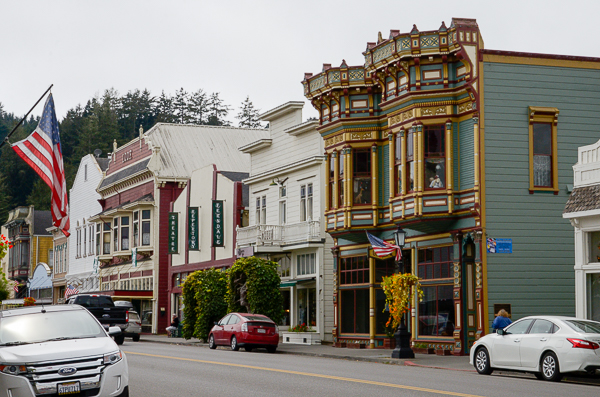
After visiting the trees, we had free time in the city of Ferndale, which has an impressive collection of preserved Victorian-era buildings -- and some enticing shops -- before returning to Eureka for another night.
Most of our companions headed for the shops, but Jim and I headed for the ice cream! It was yummy!
The area is noted for its dairy production. I had noticed that a significant number of the cows were Jerseys, noted for rich milk with high butterfat, along with the ubiquitous Holsteins, noted for high volume of milk production. The area is the home of Humboldt Creamery, which advertises a range of organic and sustainable milk products.
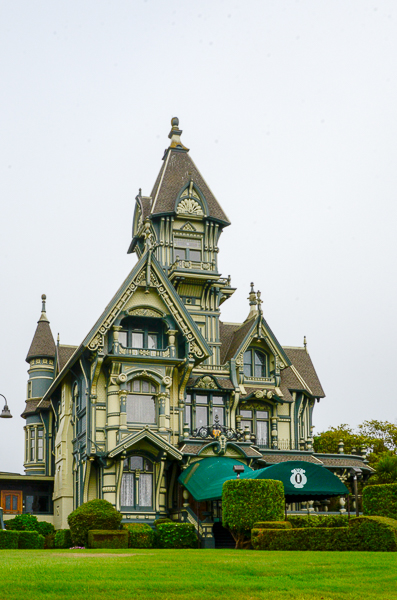
On our way to supper at the Samoa Cookhouse, we stopped to take pictures of the Carson Mansion, now home of the Ingomar Club. (There are interior pictures at the link. Pretty impressive!)
The cookhouse doesn't take its name from the fact that many Pacific Islanders emigrated to the northwest, although they did, especially from Hawaii. The town where it is located is called Samoa. Lynn told us that place names such as Samoa and Manila became fashionable around the turn of the 20th century. After the Spanish-American war, Spain ceded their territories to the United States -- including the Philippines -- in 1899. Eastern Samoa became a U.S. protectorate in 1900 after a negotiation with Germany and Great Britain.
Click your "back" button to return to the previous page or click for our picture album.